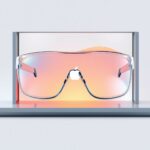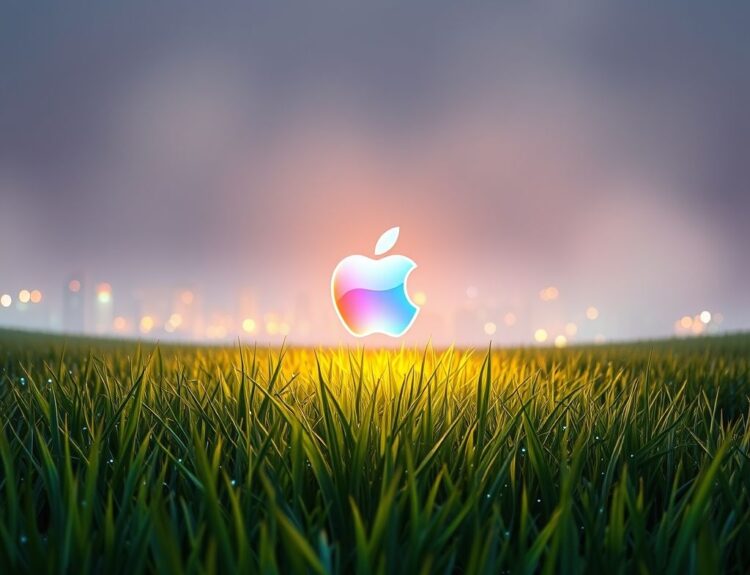Okay, so I stumbled across this really interesting piece on TechCrunch the other day, and it got my brain buzzing about what Apple’s up to. The article, titled “Apple’s Liquid Glass Design is Paving the Way for AR Glasses,” basically dives into how Apple’s recent visual overhaul might be a sneak peek at their long-rumored AR glasses, supposedly dropping next year.
Now, I’m no insider, but the idea that this “Liquid Glass” design – think sleek, minimalist, and almost impossibly smooth – is actually prepping us for a whole new way of interacting with technology is super intriguing.
Why? Because AR needs to be seamless. Clunky tech ruins the immersion. Apple’s known for prioritizing aesthetics and user experience, and this design language seems perfectly aligned with creating AR glasses that feel less like a gadget and more like a natural extension of ourselves.
Consider this: Statista projects the global augmented reality (AR) market to reach nearly $90 billion in 2024. That’s a HUGE market, and Apple wants a piece of that pie. But they won’t just throw anything out there. They’re going to want a product that’s both functional and beautiful.
And think about the challenges of AR: processing power, battery life, and, of course, making the headset look good. A recent study by Deloitte found that 64% of consumers are interested in AR applications, but only if the experience is intuitive and visually appealing. That’s where design comes in.
The Liquid Glass aesthetic could be the key to making AR glasses something people actually want to wear. It’s not just about looking cool (though that helps!), it’s about creating a device that blends seamlessly into our lives.
My Takeaways:
- Design Matters (Big Time): Apple understands that aesthetics are crucial for AR adoption. This “Liquid Glass” design hints at a focus on sleekness and minimalism, making the technology more approachable.
- Seamless Integration is Key: The goal is to make AR a natural extension of our reality, not a clunky add-on. Apple’s design philosophy supports this.
- The Market is Ready (Almost): AR is poised for massive growth. Apple is likely positioning itself to be a major player, but they’re waiting for the tech (and design) to be just right.
- User Experience is Paramount: Intuitive and visually appealing experiences are essential for attracting consumers. Apple excels at this.
- It’s More Than Just Looks: This design could also be influencing the materials used in the actual build, making them lighter and more durable.
I’m curious to see if this TechCrunch article is right. If it is, and Apple nails the design and the technology, AR glasses might actually become the next big thing. What do you think?
FAQs About Apple’s AR Glasses
1. What exactly is “Liquid Glass” design?
It’s a design language characterized by sleek, minimalist aesthetics, smooth surfaces, and a focus on blending technology seamlessly into our everyday lives.
2. When are Apple’s AR glasses expected to be released?
Rumors suggest a potential launch in 2025, but Apple hasn’t officially confirmed anything.
3. Why is design so important for AR glasses?
AR glasses need to be visually appealing and comfortable to wear for extended periods. A clunky design can hinder adoption.
4. What challenges does Apple face in developing AR glasses?
Challenges include miniaturizing components, maximizing battery life, and creating a user-friendly interface.
5. How big is the AR market right now?
The augmented reality (AR) market is quite big and is projected to reach nearly $90 billion in 2024.
6. What are some potential applications of Apple’s AR glasses?
Gaming, navigation, communication, productivity, and entertainment are just a few possibilities.
7. Will Apple’s AR glasses be expensive?
Given Apple’s history, it’s likely they will be priced at the higher end of the market.
8. How will Apple’s AR glasses differ from existing AR/VR headsets?
Apple is expected to prioritize design, user experience, and seamless integration with its ecosystem.
9. What other companies are working on AR glasses?
Many companies, including Meta, Microsoft, and Google, are investing in AR/VR technology.
10. Will AR glasses replace smartphones in the future?
It’s unlikely they will completely replace smartphones, but they could become a significant part of our daily lives.







